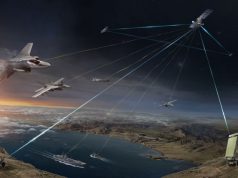
The US Army’s Integrated Battle Command System (IBCS) demonstrated scalability and resiliency to enable all-domain command and control capabilities in two recent flight tests.
The system intercepted a high-performance, high-speed tactical ballistic missile (TBM) target using IBCS in the first test, according to Northrop Grumman, the prime contractor on the program.
Aided by the company’s Joint Tactical Ground Station (JTAGS), which delivered space-based sensor data to the system for early warning of an inbound ballistic missile launch, IBCS established a track from the JTAGS data before ground-based sensors were able to detect the target, thus providing increased situational awareness for the operators.
During the second flight test, IBCS demonstrated the resilience of the system to defeat two cruise missile targets in what Northrop described as a “stressing electronic attack environment.” IBCS was able to maintain continuous track custody of the targets by fusing data from multiple sensors degraded by electronic attack, the company said.
The testing took place at White Sands Missile Range, New Mexico, with soldiers of the US Army 3rd Battalion, 43rd Air Defense Artillery (ADA) Regiment at the controls of the system. These tests are part of the Initial Operational Test and Evaluation (IOT&E) of IBCS, in which the system is evaluated on its operational performance prior to deployment and full-rate production.
IBCS is currently undergoing IOT&E after completing its eighth and final developmental flight test in July last year, engaging a cruise missile target during the trial.
IBCS is designed to provide the Army with an integrated command-and-control system, capable of blending current and future air and missile defense sensors and weapon systems under a unified network. IBCS enables battle survivable “any-sensor, best-effector” operations by fusing information from multiple, disparate sensors to create a single integrated air picture, and employing all available effectors to defeat advancing threats.
The system has an open, modular and scalable architecture that is foundational to integrating all available assets in the battlespace, regardless of source, service or domain.
“We continue to demonstrate our architecture’s power to leverage information from every domain, delivering unprecedented situational awareness and increased time and options to warfighters,” said Christine Harbison, vice president and general manager, combat systems and mission readiness, Northrop Grumman. “IBCS’s maturity and ability to connect legacy systems significantly helps to expand their mission capability.”


























